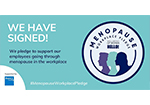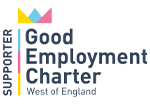Blog

Art & Design: A Career Starter Guide
October 2024
October's blog offers a glimpse into the world of Art & Design, a vital part of the UK's world-leading Creative Industries sector, generating around £126bn to the economy and employing 2.4 million people. The UK is the fifth largest exporter of creative services (valued at £45bn) and the seventh largest exporter of creative goods (worth £12bn) and continues to play a key role in the global market.
The art and design world offers a myriad of diverse roles. As part of its Creative Art and Design Sector coverage, Prospects highlights 54 of these roles here. Some are creative positions, while others focus on management, client services, or planning. You’ll also find artists, therapists, conservators, and curators. While many professionals hold art or design degrees, others may come from different academic backgrounds.
The importance of portfolios
The starting point of any art or design career is usually a portfolio of work. Often digital, this is a shop window of visual skills, ideas and creativity which can be shown to colleges, universities or employers as part of an application process.
Most artists and designers will have an A Level or equivalent in a visual creative subject, though this is not compulsory. If the portfolio of work shows skill, critical thinking and a progression of visual ideas, it can be made up of work done in free time as well as part of the school curriculum.
Art & Design Foundation Diploma courses
This popular one-year course provides a bridge between school and university degree and allows students to experiment in all aspects of Art & Design before identifying their specialism.
There are many Foundation Diploma courses offered at colleges and some universities all over the country. The courses are free to UK students under the age of 19. Check out the course run by the University of the Arts London, for example, here.
Today, with wider range of A Level and BTEC subjects like Textiles, Graphics and Fashion Design, many students will feel confident enough to apply straight to a university course. However, the benefits of the Foundation Course remain - it allows for wider creative exploration into unexplored areas of Art & Design and the chance to produce a more developed portfolio. For a summary of the pros and cons of the Foundation Diploma course from The Complete University Guide, read more here.

University or Apprenticeship?
The choice is yours. From Animation to Visual Effects (VFX), there are thousands of Art & Design degree courses at UK universities, which is why understanding your own strengths is key. Choose from courses taught in mainstream universities and others in dedicated Art Colleges. Make sure you visit to check you like the environment as well as the course.
Some courses are highly vocational, training the student in the tools of the trade they will use in their work. Others, such as Fine Art degrees, focus more on the development of the individual in intellectual, emotional and critical terms. Consider what you want from a degree course: training for a job or an extension of your education and personal development. For those taking non-vocational undergraduate degree courses, there are options for further job-focussed training as a postgraduate.
The apprenticeship route is growing in popularity, with thousands of people starting design apprenticeships every year. Many of these are degree level programmes. Again, it is crucial to know your strengths when choosing what type of design apprenticeship to pursue. You will be trained to do a particular job, so it must be one you’ll be good at and enjoy doing. UCAS has an industry guide here. Also try the UK Gov Find an Apprenticeship website and Rate My Apprenticeship.
Work Experience
While an apprenticeship offers work-based experience, graduates of art and design degree courses must look outside their studies to find the crucial experience which leads to employment.
Paid internships are available as is unpaid work experience. Both can lead to permanent paid employment, but this is not guaranteed. Some design companies establish partnerships with degree programmes and prefer to recruit graduates from those institutions. Therefore, it’s essential to consider the industry connections of a course when choosing where to study. Use your contacts or your course’s industry links to find work experience. Try these websites for further opportunities:
Springpod (Virtual Work Experience)
Career Pilot (Virtual Work Experience)
Access Creative (for Graphic Design)
My Port (University of Portsmouth)
Employers
Depending on your specialism, your employer could be a design company, an advertising agency, a packaging company, a film company, a government department, a gallery, a museum, a fashion house, a gaming company, a publisher, an architectural practice, a theatre, a retailer, a manufacturer, or you could work in-house for a company in almost any sector.
Here are some recruiters in the sector:
If you Could (mainly for Graphic Design) and
Draw (for jobs in the Fine Arts).
Career Paths & Progression
Given the multitude of roles in the Art & Design sector, no two career paths will be the same. Apprentices or Graduates of Art & Design degree courses may find work in the creative specialism of their course or related roles in the management or client side of creative companies. Some do further training, to become teachers, conservators, therapists, or creatives in a different medium or field.
Whether you choose to pursue a degree, an apprenticeship or a more exploratory path like the Foundation Diploma, understanding your strengths and building a strong portfolio are essential first steps. Work experience and industry connections will further enhance your employability and with a wide range of employers and specialisms to choose from, the possibilities are endless.
As you embark on your journey, remember to explore all the resources available and consider seeking independent careers advice and guidance to make informed decisions that align with your passions and goals.
Further Research
Creative Boom (a publication)
It’s Nice That (Design Blog)
Creative Review (a publication)
If you want to speak to one of our advisers, please feel free to reach out to us at enquiries@futuresmartcareers.co.uk
Images by Freepik



 0330 311 9509
0330 311 9509 






